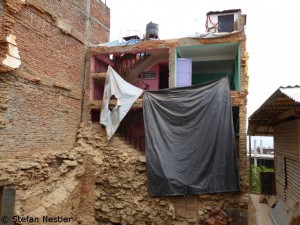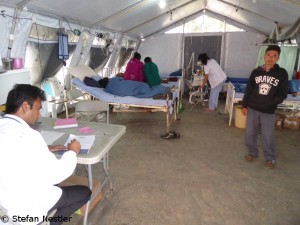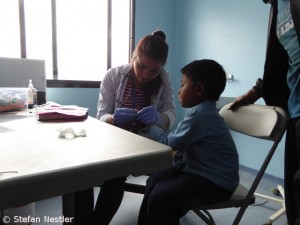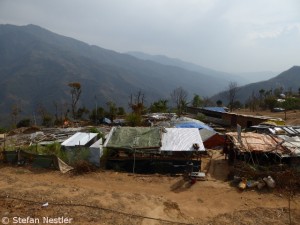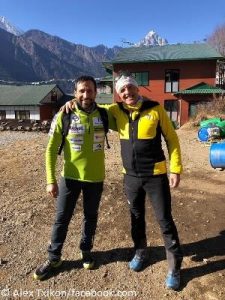Still no light at the end of the tunnel
Chautara appears as if the devastating earthquake had hit it recently, not almost eleven months before. About 15,000 people are living in the city at an altitude of 1,500 meters, the administrative headquarter of Sindhupalchowk District, which was particularly hard-hit by the earthquake on 25 April last year. On the main street many ruined houses still witness to the disaster that killed more than 3,500 people in this mountain region. In many villages about 90 percent of the houses collapsed. The cleanup is progressing slowly. Too heavy are the wounds that the earthquake has ripped, not only at the buildings, but also for the city’s inhabitants. “There is still a very great problem of health,” says doctor Sabina Parajuli. “Those who were injured that time, have not fully recovered because of lots of problems, especially in their limbs. They were operated at that time and not able to do their normal activites. They were the only family members with income, but they are not working and are not getting money. And the other family members are busy with taking care of them.” In addition, infectious diseases such as vomiting or diarrhea spread quickly because the people live in crowded shelters.
Still a tent clinic
Sabina works in the hospital of Chautari. The large building was so badly damaged in the quake that it can not be used without extensive repairs. Therefore, Sabine and her colleagues are still working mainly in tents on the grounds of the clinic. Only a small building with an office and a treatment room was newly built after the earthquake. “Some of the tents have been destroyed by the strong winds in recent times,” says the 25-year-old.
The doctors are treating not only physical diseases but also mental. “Many suffer from post traumatic disorders, means stress after many months of the traumatic event. They are afraid of minor things, don’t sleep properly and they are not interested to have food properly”, says Sabina Parajuli, adding that some patients are highly depressed because they lost relatives, their house or the entire property. She estimates that only about 30 to 40 percent of the mentally ill visit the hospital: “In our communities psychological injuries are very stigmatized and there is very discrimination.” In addition, many are not aware that they are suffering from a desease and that this can be cured, she says.
Politics, Politics, Politics
The doctor is in no way satisfied with the government – like actually all I talked to in Sindhupalchowk. “They have to help us as early as possible. But the government is only making politics, politics, politics and is not acting where it is needed. So there is very slow help and progress. Nowadays we are not hoping anything from them. And we are just trying to do the best ourselves.”
For the doctors at the hospital of Chautara that means still working up to their personal limits. In the first weeks after the quake, Sabina was deployed nearly around the clock. “Of course we were tired. But the other people were injured and more stressed than us. Compared with these other people we were healthy. They needed our help”, said the young doctor. “I was not forced by anyone, but by my heart. I had to do something for my home village Sangachok and the villagers. It was my chance and opportunity to serve them.”
Hoping for the straight stretches
There are still aftershocks in the region. People fear that another, perhaps even heavier earthquake than that on 25 April 2015 could occur. There is still no sign of normality in Sindhupalchowk District, says Sabina: “Of course there will be a light at the end of the tunnel. But the tunnel is not straight, it’s curved. And because of these curves we can’t see the light nowadays. If we get to the point where the tunnel is straight, we can see it. We haven’t yet reached that point. But I hope we’ll do it in very near future.”



